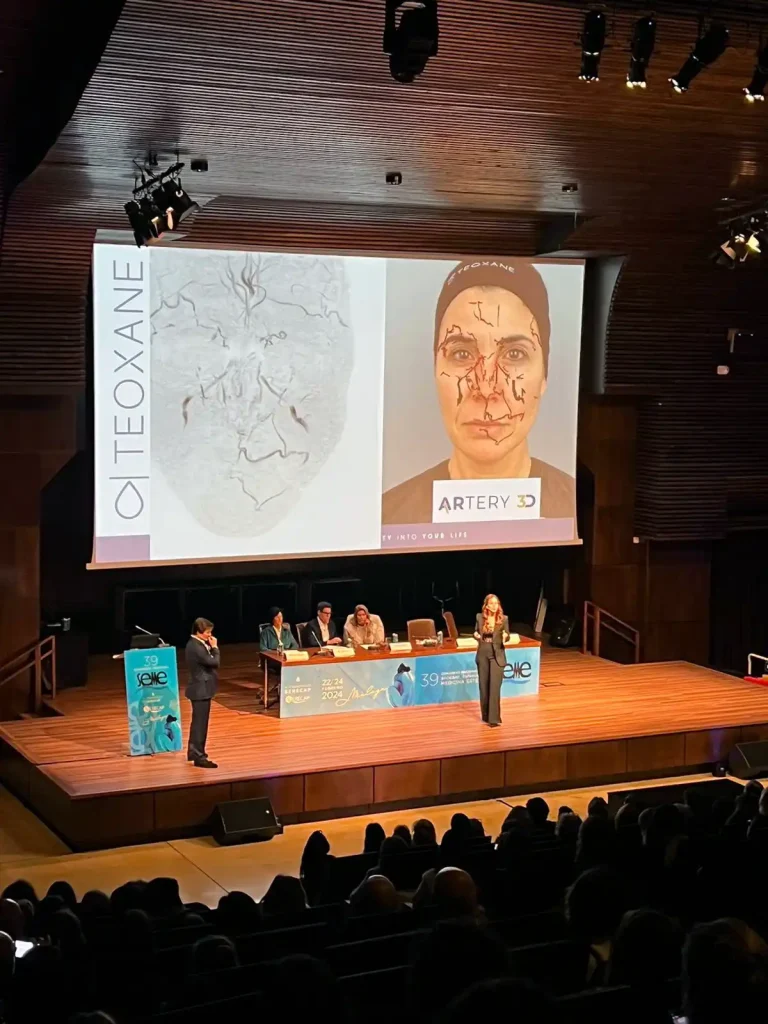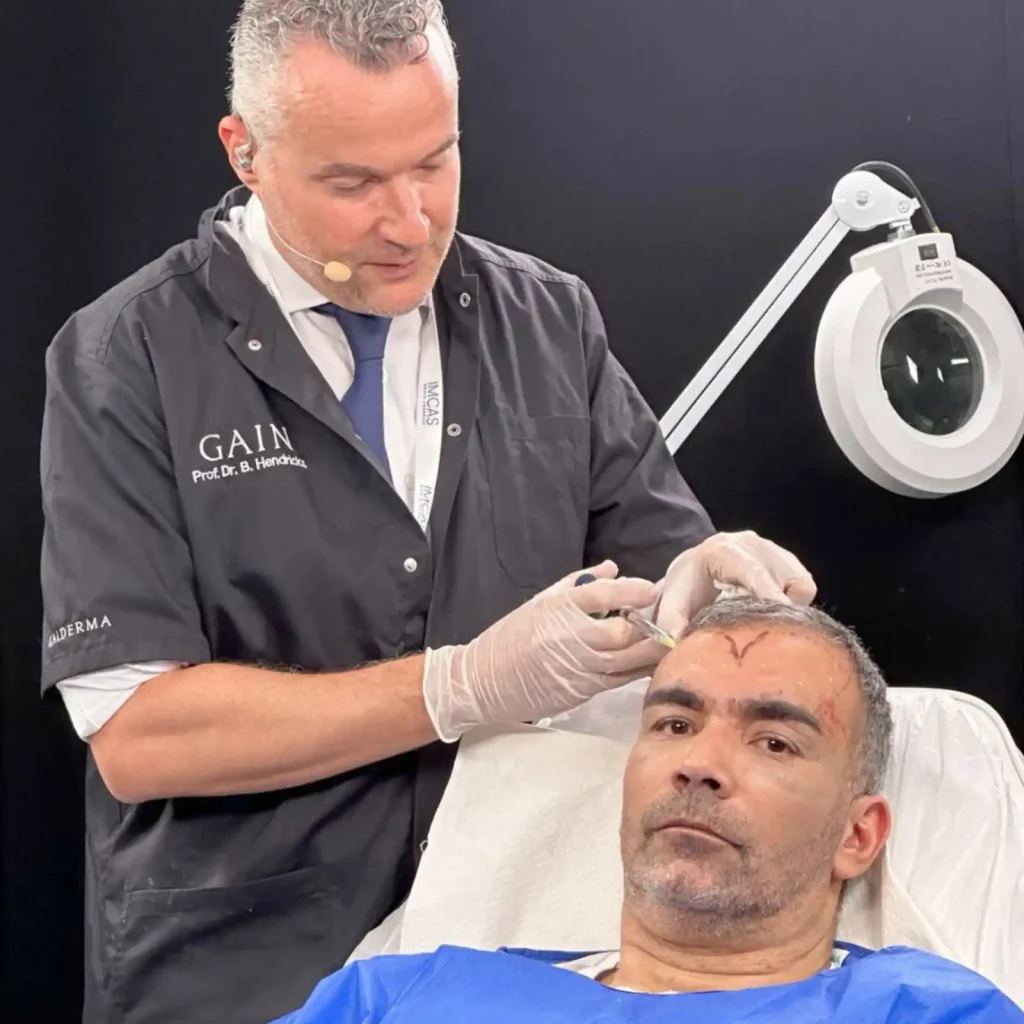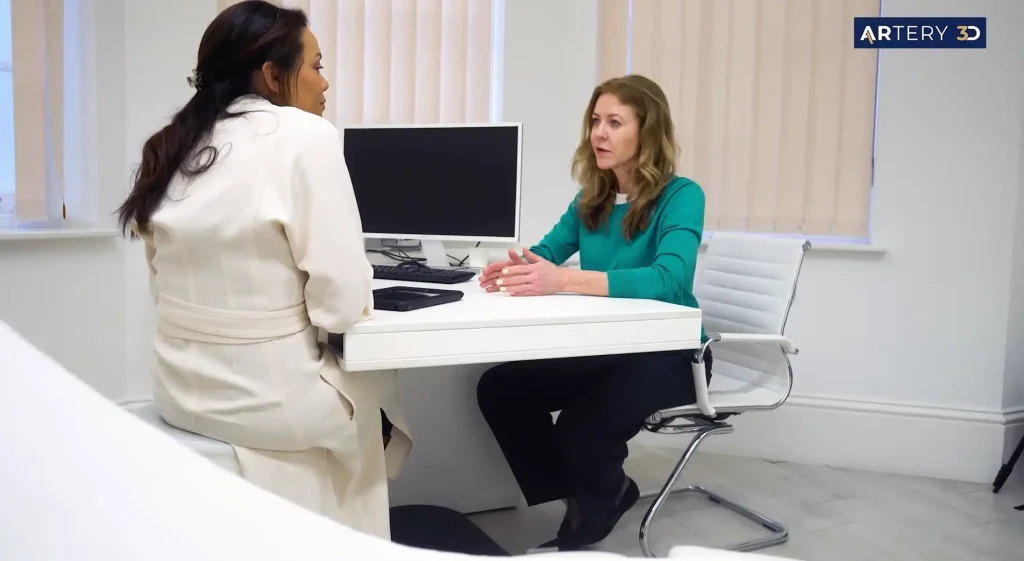We travelled to Malaga to participate in the National Congress of Aesthetic Medicine, SEME 2024, thanks to Teoxane Laboratories. We had the honour of this important company presented our application, ARtery 3D, and its outstanding contribution to the field of aesthetic medicine. The conference was attended by over 700 surgeons, who showed great interest in our innovative tool.


Presentation
The presentation, which was titled “Teoxane, different approaches for the same treatment,” included practical cases explained by doctors José Vicente Lajo and Paula Rosso. The symposium took place in the afternoon shift of the second National Congress held in what is known as the capital of the Costa del Sol.
During the presentation, in which doctors Lajo and Rosso from the Swiss company participated, the professionals present were able to verify that in just a few seconds it is possible to detect and visualize the facial arteries of any person.
And that, as a result of this kind of arterial GPS of the face, injectable treatments, such as Botox or hyaluronic acid, or operations such as rhinoplasty, are carried out more safely, since the surgeon knows the patient’s blood vessels. Furthermore, thanks to ARtery 3D, once a patient’s arterial anatomy is analyzed, all that information is accumulated for future occasions, saving the patient the inconvenience of having to undergo certain analyzes every time they enter a medical center.
The new application, created by Augmented Reality and which is already present in several countries, was announced before in Malaga at other important events for aesthetic surgery professionals such as IMCAS in Paris (February 1 to 3, 2024) or AECEP Meeting in Madrid (November 16 to 18, 2023).

For Augmented Reality, the Malaga event confirms the upward trajectory of ARtery 3D, an application increasingly used by surgeons who are sometimes, for example, forced to reconstruct serious facial injuries caused after a traffic accident.

Some of the clinics in which patients are already previously treated with this technique are the Phi Clinic in London, the Center Clinic MIR-MIR in Barcelone or the Laser Medical Institute in Madrid, centers of recognized prestige in the field of aesthetic surgery.








